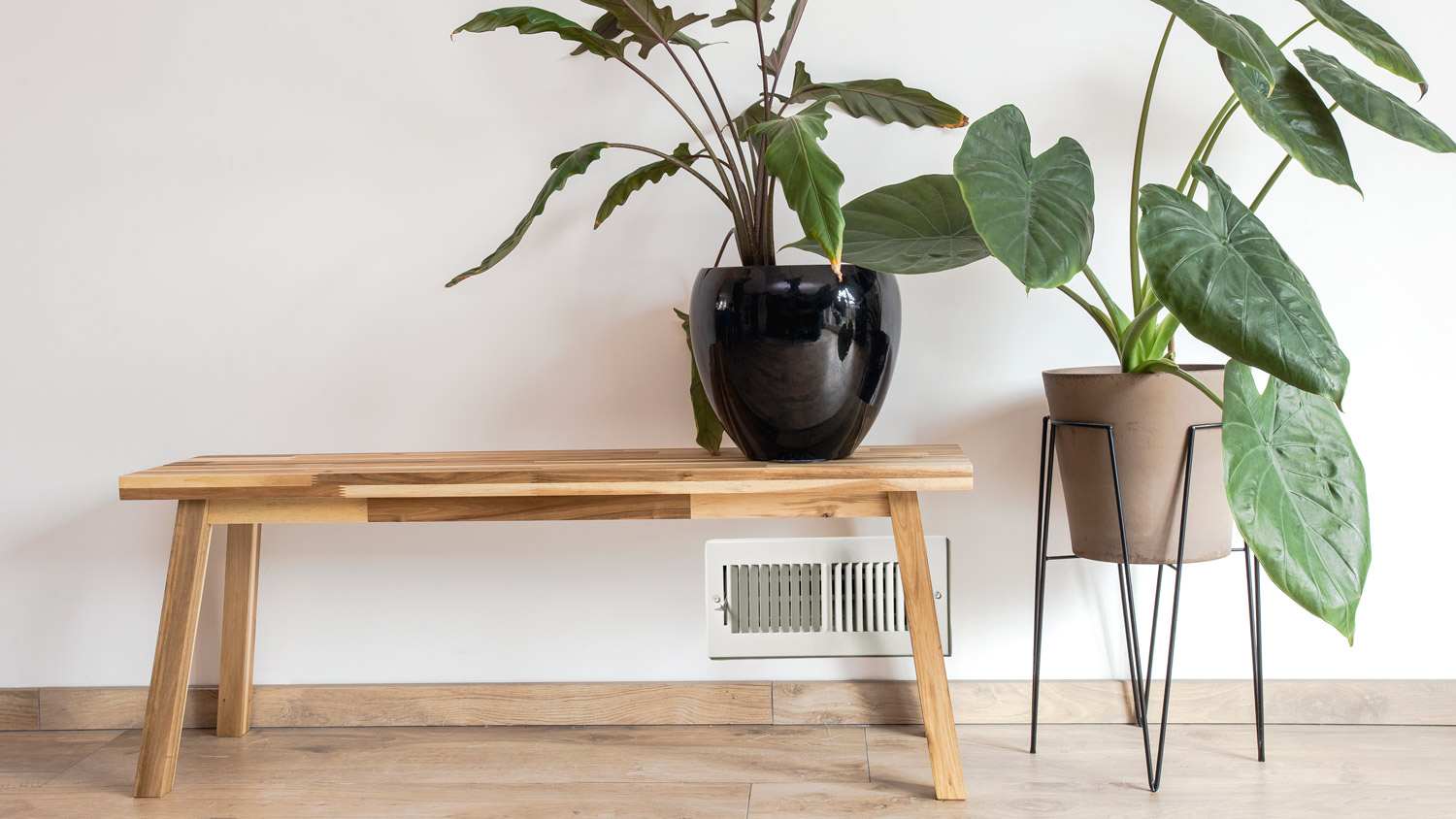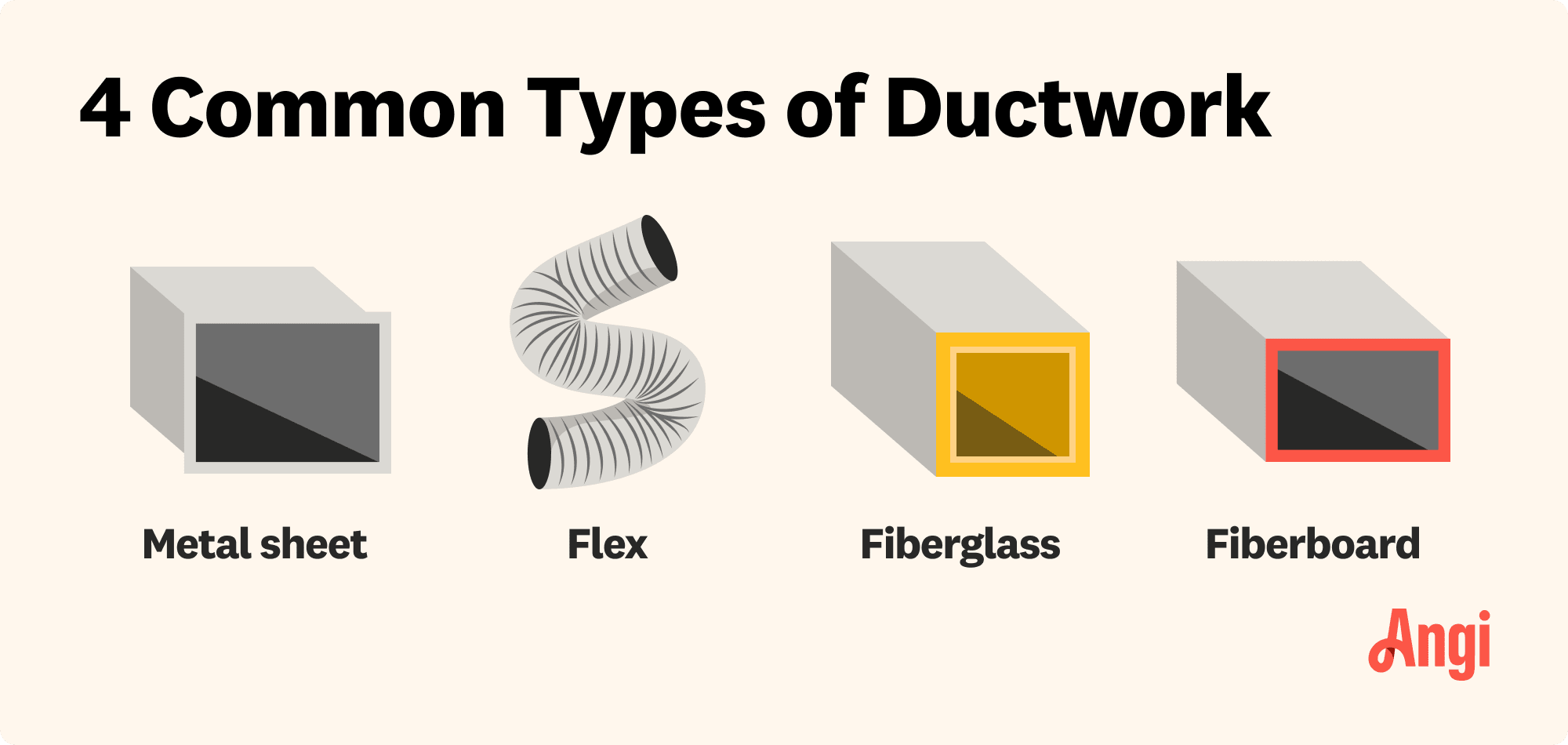
The average boiler installation cost depends on size, system type, and other factors. Keep reading to learn the cost of a new boiler in New York City.
Air duct replacement in Orlando, FL, costs $813 to $2,764, with an average of $1,593. You’ll pay more for high-end materials or difficult access points. Reach out to a local HVAC pro for an accurate estimate.


Air duct replacement costs in Orlando, FL, vary by home size, materials, and location.
Home sizes are bigger on average in Orlando, so prices might be higher than average.
You’ll spend more on duct replacement in crawl spaces and less on replacement in exposed areas.
Labor takes up around 60% of the cost to replace air ducts.
The average air duct replacement cost in Orlando, Florida, is $1,593, but prices can range from $813 to $2,764. Common factors that affect the cost to replace air ducts include labor, the size of the home, the location of the air ducts, and the materials. Permit fees can also influence the final cost of the project.
When budgeting for air duct replacement costs in Orlando, FL, you’ll want to consider your home’s size, where your ducts are located, and the duct material you plan to use. Here’s how each of these factors can skew your estimates.
The size of your home directly affects air duct replacement costs. Larger homes require more duct materials and labor to replace the entire air duct system. On average, the cost ranges from $2,000 to $5,000 for a small- to medium-sized home. However, duct replacement can run as low as $1,400 for smaller homes and as high as $9,000 for larger homes. Here’s how the size of your home affects duct replacement costs:
| House Size in Square Feet | Average Cost |
|---|---|
| 500 | $700–$1,100 |
| 1,000 | $1,400–$2,300 |
| 1,500 | $2,100–$3,400 |
| 2,000 | $2,800–$4,500 |
| 2,500 | $3,500–$5,600 |
| 3,000 | $4,200–$6,800 |
| 3,500 | $4,900–$7,900 |
Homes in Orlando run on the larger side. According to data from Realtor.com, the median household size in metropolitan cities across the country is just under 1,900 square feet, and the median size in Orlando is nearly 2,150. Since available inventory shows that homes run around 250 square feet more than the national average, expect prices to reflect the increased cost of materials for air duct replacements.
If only specific sections of your ductwork need replacement, such as in a renovation project, costs will depend on the location of the damaged or worn ductwork. The U.S. Department of Energy states that attics are one of the most common places for air ducts in Orlando, Florida. They’re also one of the costliest locations. Replacing ducts in hard-to-reach or concealed areas—like attics, basements, ceilings, walls, or crawl spaces—can increase labor costs.
Here’s how the location of the ducts could affect their cost:
| Location | Average Cost |
|---|---|
| Attic | $2,200–$5,600 |
| Basement | $1,800–$3,100 |
| Crawl space | $3,000–$7,300 |
| Ceiling | $1,000–$4,000 |
| Exposed | $700–$3,000 |
| Wall | $1,000–$4,000 |
In Florida, air ducts are often located in locations like attics, garages, and crawl spaces where there’s no air conditioning. Older homes often utilize crawl spaces, making them more costly to replace.

The material you choose for your replacement ducts affects both their cost and longevity. The most commonly used duct material in Orlando, FL, is sheet metal made from galvanized steel, which, unlike aluminum, is resistant to seawater corrosion.
Sheet metal ducts are durable but pricey. Their water-resistant properties, however, make them a popular option for residents of Orlando, where heat and humidity can easily cause mold issues in duct materials that are susceptible to water damage. Flexible ducts, on the other hand, are more affordable but may need to be repaired or replaced sooner. Here’s a breakdown of air duct replacement costs based on duct material:
| Duct Material | Average Cost per Linear Foot | Pros | Cons |
|---|---|---|---|
| Flexible (non-insulated) | $1–$3 | Low cost | Weaker, energy inefficient |
| Flexible (insulated) | $2–$4 | Low cost, more energy efficient than non-insulated flex | Weaker, prone to mold |
| Fiberboard | $4–$6 | Quiet, insulated | Poor airflow efficiency, shorter lifespan |
| Fiberglass | $4–$6 | Durable, quiet | Loose fibers can enter airways, water-susceptible |
| Sheet metal | $7–$13 | Mold-resistant, durable, efficient | Noisy, high-cost |
The average cost to hire an HVAC pro in Orlando, FL, is between $50 and $110 per hour, or 60% of the cost to replace the air ducts. The most skilled HVAC professionals charge more for their expertise, while newer technicians charge less.
HVAC technicians can also take care of the permit requirements in Orlando. The city of Orlando charges residents $75 for an air conditioning installation building permit that includes ductwork and is good for up to 3 tons of equipment. While it’s not required to hire an expert who does ductwork for your own property, it’s strongly encouraged to work with a professional to avoid any issues or further expenses along the way.
Quality ductwork will increase the efficiency of your HVAC, sometimes by 20% to 30%. This is because there is reduced air leakage due to better insulation and more optimized airflow. This means your HVAC doesn't have to work as hard to keep the desired temperature, so it uses less energy.
Replacing air ducts doesn't increase home value by much. If your existing air ducts are in very poor condition, then they can decrease your home's value, so it makes sense to update old air ducts. Prospective home buyers appreciate quieter air ducts that have good insulation and offer better indoor air quality.
If you’re hoping to see a big return on your investment, consider upgrading your entire HVAC system—especially if the whole system is outdated. A new HVAC system could increase your home value by 5% to 7%. Additionally, an Orlando home appraiser can help you determine the best way to boost the value of your property if you’re considering selling your home.
Home is the most important place on earth, which is why Angi has helped more than 150 million homeowners transform their houses into homes they adore. To help homeowners with their next project, Angi provides readers with the most accurate cost data and upholds strict editorial standards. We survey real Angi customers about their project costs to develop the pricing data you see, so you can make the best decisions for you and your home. We pair this data with research from reputable sources, including the U.S. Bureau of Labor Statistics, academic journals, market studies, and interviews with industry experts—all to ensure our prices reflect real-world projects.
Want to help us improve our cost data? Send us a recent project quote to [email protected]. Quotes and personal information will not be shared publicly.
From average costs to expert advice, get all the answers you need to get your job done.

The average boiler installation cost depends on size, system type, and other factors. Keep reading to learn the cost of a new boiler in New York City.

Whole-house humidifier costs vary based on the type and size of the unit, along with other factors. The price might be worth it for people living in dry regions.

You’ll spend an average of $5,466 on new furnace costs in New York, New York, but your final price depends on a number of factors. Here’s what to expect.

If you’re thinking about an alternative to a traditional HVAC system, you may want to consider a heat pump. Read on for more about heat pump systems.

Need to purchase a new gas furnace but aren’t sure which type is right for your home and needs? Taking a little bit of time to research furnaces to see which option is right for you can save you money over time. Here’s a look at five furnace types.

Tackling unwanted odors from indoor plants can be tricky. Learn how to use a carbon filter in your duct fan to improve air quality.